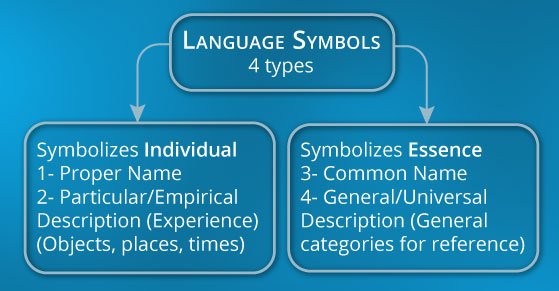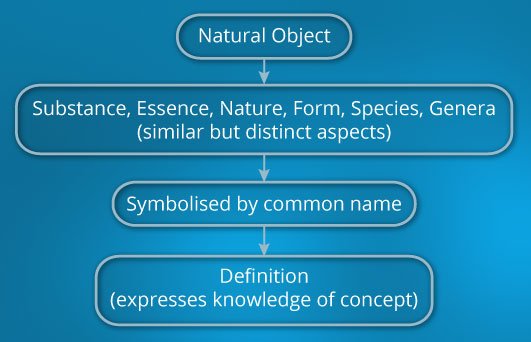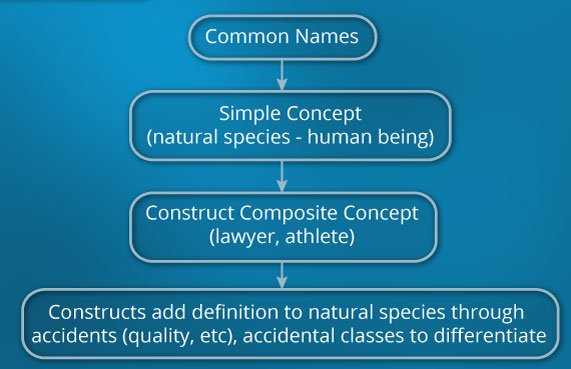Following from the previous post, after we sense, perceive, abstract and derive the universal essence within individual particulars, the next part is creating arbitrary symbols to reference those universals and particulars.
When we create a symbol to represent something, we are symbolizing individual particulars, or universal essences that are represented within those particulars.

Language Symbols
Individual
- proper name
- particular description, specific reference
Essence
- common name
- universal description, general category for reference

In nature or existence, there are natural objects. These objects show us the nature of the thing, and the substance, essence, form, species, genera of how they are similar yet distinct, or different. These are what we create symbols for. These are represented by common names that we add definition to in order to express knowledge of the concept.

The common name reflects a simple concept. Ex: the human being is part of the human species. We can construct composite concepts, such that a human can be a lawyer as well, or an athlete. Concepts join together to represent something more specific.
We can keep constructing composite concepts. Each construct adds definition to natural substances through accidental properties or qualities. These accidents are contingent or dependent upon the necessary substance that comes before it in order for it to be expressed through.